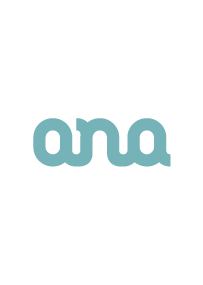Hypertension, likewise known as hypertension, is an usual health and wellness problem that influences countless individuals worldwide. It is a persistent clinical problem characterized by the force of blood versus the walls of the arteries being continually too high. Hypertension is often referred to as the «silent killer» as it seldom provides any visible symptoms up until it reaches a sophisticated stage.
High blood pressure is categorized into various stages based on the severity of the problem. In this post, we will certainly focus on phase 1 high blood pressure, likewise referred to as mild high blood pressure. We will certainly check out the reasons, signs, as well as treatment options for people in this stage.
Causes of Hypertension Phase 1
The specific source of high blood pressure is often unidentified, but there are several factors that can contribute to its growth. For the most part, hypertension is an outcome of a combination of hereditary and ecological factors. Some of the major causes of hypertension phase 1 include:
- Household background of hypertension
- Age (threat increases with age)
- Excessive weight or obese
- Physical inactivity
- Poor diet plan, particularly one high in salt and also reduced in potassium
- Too much alcohol intake
- Cigarette smoking
- Tension
- Underlying wellness problems such as diabetes mellitus, kidney condition, and also sleep apnea
It is very important to note that while these elements can contribute to the development of high blood pressure, they do not guarantee its event. Some individuals may have para que sirve bihecol high blood pressure without any of the stated risk variables, while others may have several danger aspects and also never ever create the condition.
Signs And Symptoms of Hypertension Phase 1
Stage 1 hypertension generally does not present any recognizable signs and symptoms, which is why it is essential to regularly monitor blood pressure levels. The lack of signs and symptoms can make it testing to detect the problem without routine check-ups or medical exams.
Sometimes, individuals with hypertension stage 1 may experience mild symptoms, such as frustrations, dizziness, obscured vision, or a battering feeling in the upper body. Nevertheless, these symptoms are nonspecific and can be easily attributed to other reasons, resulting in undiagnosed high blood pressure.
Treatment Alternatives for High Blood Pressure Phase 1
When high blood pressure is identified, no matter the phase, it is vital to address the problem without delay to prevent further health complications. The key goal of therapy for high blood pressure phase 1 is to lower high blood pressure and also decrease the danger of linked issues, such as heart problem, stroke, as well as kidney problems.
Therapy options for high blood pressure phase 1 frequently involve way of life adjustments as well as, in many cases, medicine. Below are a few of the generally recommended approaches:
- Healthy diet: Adopting a diet plan high in fruits, vegetables, entire grains, as well as low-fat milk products while limiting sodium, hydrogenated fats, and cholesterol consumption. This method is called the Dietary Approaches to Quit Hypertension (DASH) diet plan.
- Regular exercise: Taking part in moderate-intensity cardio exercise, such as vigorous walking, swimming, or cycling, for at least 150 minutes per week.
- Weight management: Maintaining a healthy weight via a well balanced diet plan and normal physical activity.
- Lowering alcohol usage: Restricting alcohol consumption to moderate levels (as much as one beverage each day for females and up to 2 beverages per day for guys).
- Cigarette smoking cessation: Stopping smoking totally, as tobacco use can considerably increase blood pressure.
- Stress and anxiety administration: Using stress-reducing techniques such as reflection, deep breathing exercises, or taking part in activities that advertise leisure.
- Drug: Sometimes, way of living adjustments alone may not be sufficient to regulate blood pressure. Doctor may suggest medicine, such as diuretics, beta-blockers, ACE preventions, or calcium channel blockers, to help lower blood pressure.
Conclusion
Hypertension phase 1, or moderate hypertension, is a chronic clinical condition identified by constantly elevated high blood pressure. It is important to comprehend the causes, signs and symptoms, and also treatment options for this problem to effectively manage it as well as avoid more issues.
While hypertension may not present recognizable signs in its early stages, normal blood pressure tracking and also routine check-ups play a crucial duty in very early discovery as well as intervention. By embracing a healthy and balanced lifestyle, consisting of a well balanced diet plan, routine workout, and also tension monitoring, people with high blood pressure phase 1 can substantially decrease their blood pressure degrees and boost their overall wellness and well-being.

